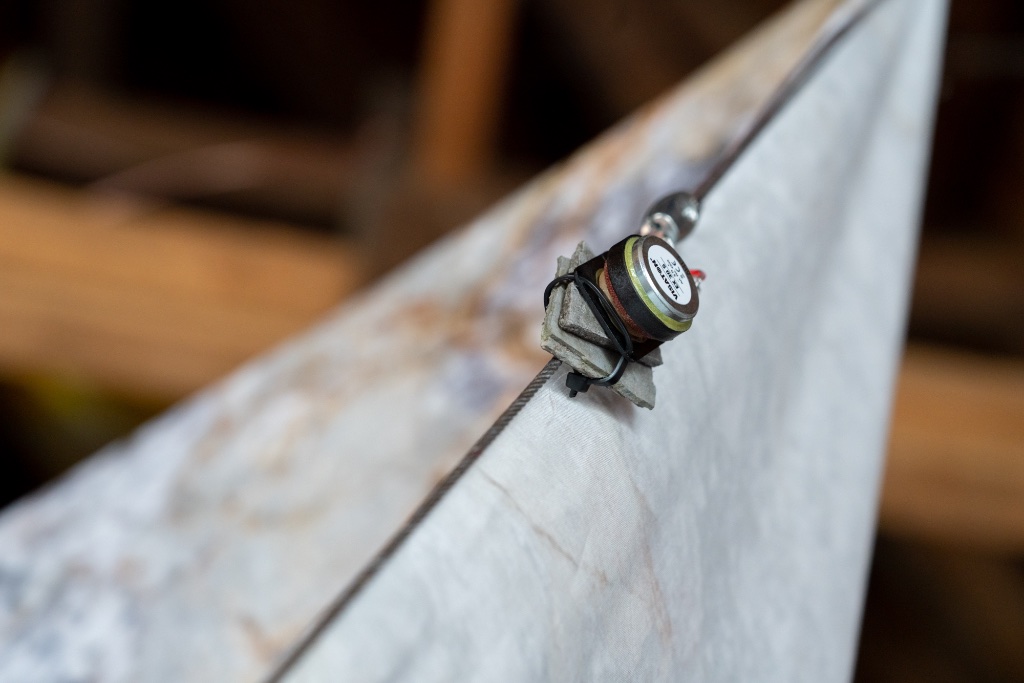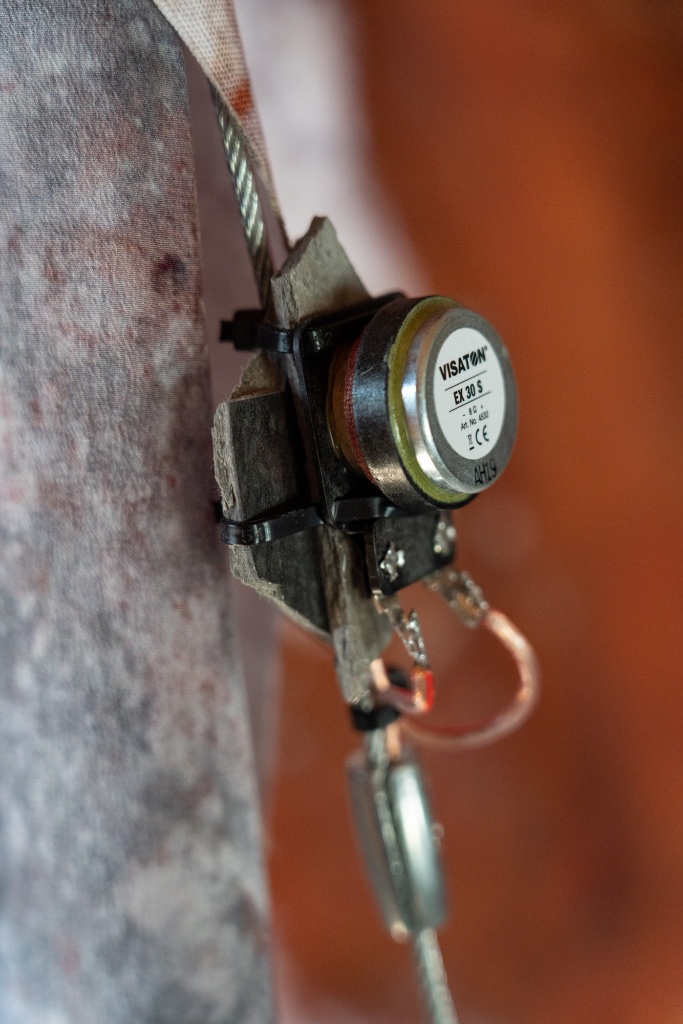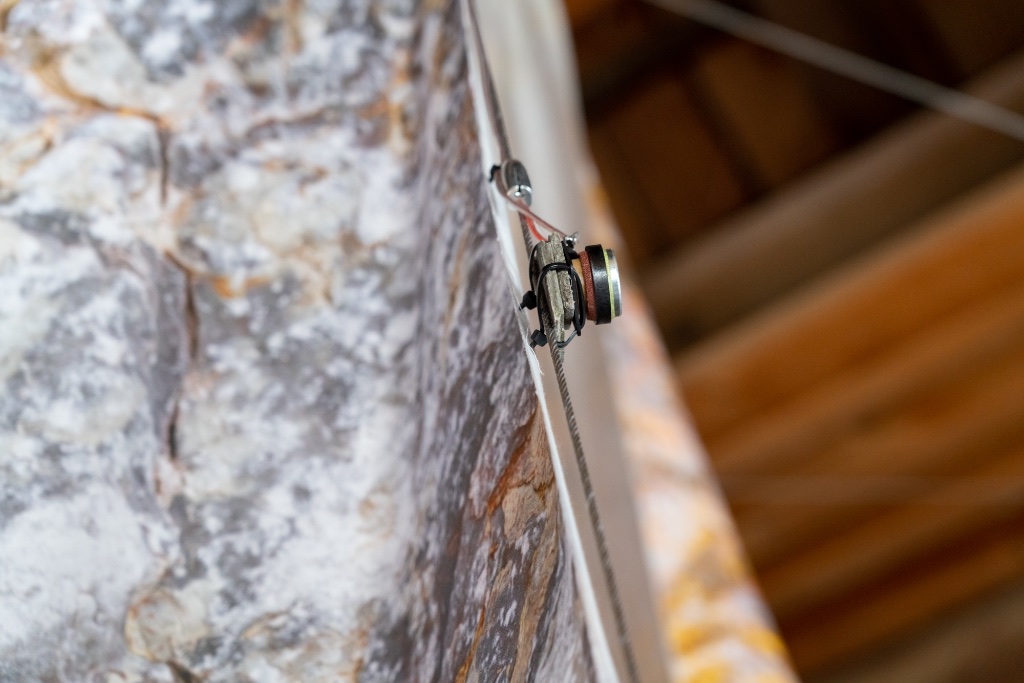Announcement
Fragments of Rotting Sounds, book presentation March 27, 2025
Our book Fragments of Rotting Sounds appears in paper at Mark Pezinger Publishing (edition of 20) and also as a digital version (infinite edition) on the Research Catalogue.
The book presentation takes place March 27 2025, 18h at the Bankettsaal of mdw – University of Music and Performing Arts Vienna, Anton-von-Webern-Platz 1, 1030 Wien.
Research Day 2021, Academy of Fine Arts, November 11
Almut Schilling will hold a lecture at the Research Day 2021, titled “Auditorium of Rotting Sounds: Maintaining Digital Decay”
At the beginning of the artistic research project we manifested that data degrade inevitable and we do perceive decay as transformation. With the establishment of the Auditorium of Rotting Sounds an extraordinary space, dedicated to site specific artworks, was created, to let the sound objects rot.
But how to control the temporal transformation of digital data, which basically are inherent dynamic systems? How to classify determinants and the symptoms of decay and its effects? And how to understand and perceive those created aesthetics?
Considering the difference between things (physical entities defined by its material properties) and objects (conceptual entities generated and perceived by semantically thinking) it is fundamental to ensure a certain legibility within the flow of time, which means to prevent that those entities are drifting too far apart. Consequently the maintenance, the controlled ›aging‹, appeared to reflect the individual artwork conceptually and its growing patina.
11.11.2021, 10:00–17:45
Akademie der bildenden Künste Wien, Schillerplatz 3, 1010 Wien, Sitzungssaal
Auditorium of Rotting sounds, open 12.11. 15:30-18:00
On the occasion of the Wien Modern festival‘s event Einschreibung, Übertragung, Abtragung (Inscription, Transmission, Erosion) taking place at the mdw Future Art Lab building, we will open the Auditorium of Rotting sounds, the sound art exhibition of the artistic research project rotting sounds, in the afternoon prior to the concert.
The following time slots are available for a maximum of 10 visitors each: 3:30 pm, 4:00 pm, 4:30 pm, 5:00 pm, 5:30 pm.
Please register with auditorium@rottingsounds.org stating your preferred time slot.
Online guest lecture at KTH Royal Institute of Technology, November 2
Rotting sounds – Digitality and materiality
Most of today’s media output, be it audio or video, is produced and stored in the digital domain. Although digital data are adorned by the myth of lossless transmission and migration, everyday experience does prove the existence of degradation and, ultimately, data loss in various forms. This pertains to the physical nature of storage media and playback devices as well as to media formats and software in the context of their technological infrastructure. The ongoing multi-year project of artistic research “Rotting sounds” strives to elaborate on the causes, mechanisms and effects of such deterioration, specifically in the context of digital audio.
In this talk, I will focus on the material nature of the digital and its implications. I will illustrate this with concrete artistic works that have been created in the course of research.
Time: November 2nd 2021, 15:00 CET
Location: https://kth-se.zoom.us/j/61230315241
Rotting sounds symposium, September 23+24
Since 2018, the project of artistic research Rotting sounds – Embracing the temporal deterioration of digital audio has been researching transformation processes pertaining to the diverse interrelations of digitally encoded information in the audio domain, its material properties and (human) interpretation within a sociocultural context. This symposium provided a room for reflection on the acquired experiences in the course of the project, to bring in external viewpoints on the relevant topics and stimulate outlooks beyond the limits of current research.
Find more info here.
co-curated and produced by sound:frame

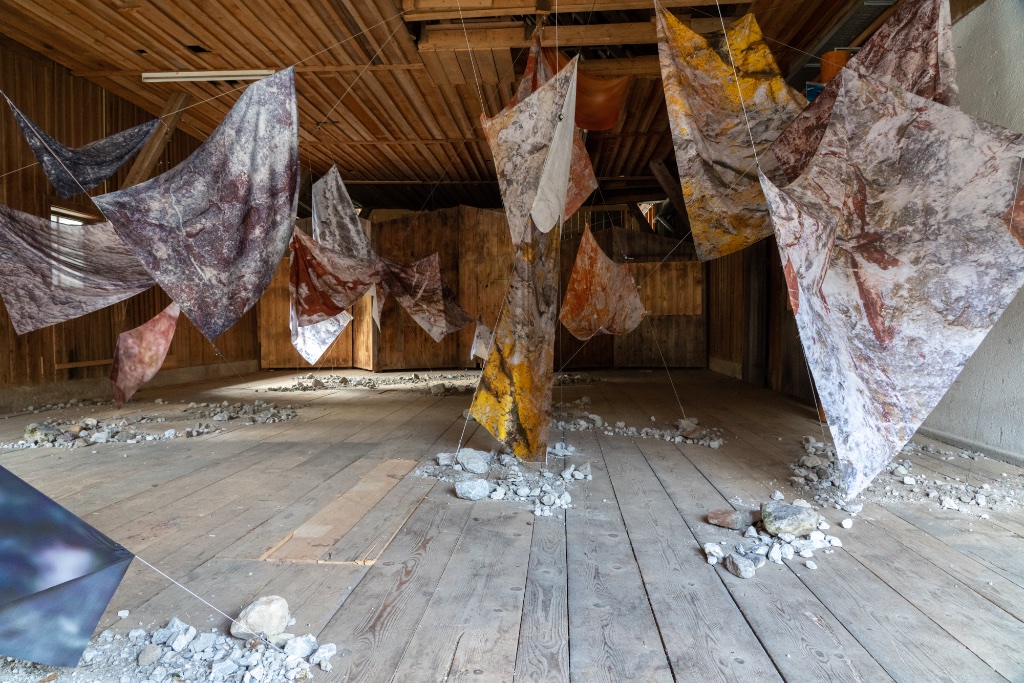
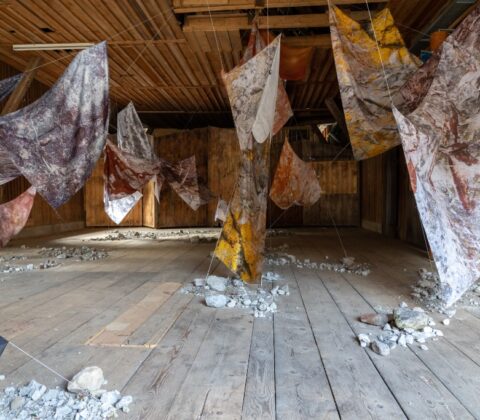
Rieseln @ National Park Gesäuse
Exhibition Alte Säge Gstatterboden 2021
Nicole Krenn, Lisa Truttmann, Thomas Grill
Manchmal, auf dem Weg, trifft es aus der Nähe auf das Ohr, unvermittelt, und mit der Kopfbewegung auf das Auge. Eine helle, leichte Bewegung der kleinsten Bestandteile. An Kanten und Flächen, über Formen und Texturen sammeln sich diese Winzigkeiten zu einer beständigen Strömung.
Sometimes, along the way, the ear is hit up close, suddenly, and then also the eye with a movement of the head. A bright, slight movement of the smallest components. On edges and surfaces, over shapes and textures, these tiny things gather to form a constant flow.
This year’s exhibition in the Alte Säge in Gstatterboden is designed by Thomas Grill, Nicole Krenn and Lisa Truttmann. Under the exhibition title “Rieseln” they deal with the forms of erosion that are omnipresent in the national park in a variety of ways. The artists have examined the temporal process of erosion as well as the visual and acoustic phenomena and elaborated them through the media. The architecture of the Alte Säge in Gstatterboden is directly integrated as the environment for these topics. An installation spans a permeable, walk-in room, flowing from ceiling to floor, in which photography and sound are used on various materials – from fine silk to coarse linen, arranged on steel threads. In terms of content and form, these materials connect the exhibition space itself and the thematic landscape of the national park. Detailed recordings in sound and image serve as a reference and source material. These fragments form contrasts between geometric and soft, rigid and flowing, in sound between naturalistic and synthetic – the installation becomes a tangible, lively landscape.
The auditory component consists of 3 vertically stacked layers: From the semi-open attic of the hall, a synthetically generated wind flow can be perceived, swelling and calming with the intensity of the sun’s irradition. Below the wooden floor, a subtle water trickle reminds of the presence of small streams all over the national park. In between those two layers, the space is traversed by an airy arrangement of steel wires, supporting the large textile surfaces and also bearing a total of 12 sound emitters. These are acoustic transducers mounted on small pieces of slate, producing ever changing patterns of tiny clicks, flowing from far overhead to below the floor. Occuring only once in a while, on a very subtle loudness level, the trickling movements provide moments of irritation within the exhibitions’s overall flow of textures and sounds.
Opening times:
May 01–15: Fri–Sun, 10–18h
May 19 through October 31: Tue–Sun (Mon closed), 10-18h
Free admission
Alte Säge Gstatterboden
gegenüber Nationalpark Pavillon
Gstatterboden 25
8913 Gstatterboden
+43 664 8252313
Re_Mole_10, October 26, Reaktor
(S)Low Frequency Orchestra together with Wolfgang Mitterer and Jérôme Noetinger
REAKTOR, Geblergasse 40, 1170 Wien, Austria
26.10.2020, 19:30
Zehn Jahre zu spät feiern wir die Veröffentlichung unseres Albums “Mole” und unterziehen es dabei einer Neubetrachtung.
“Mole” ist aus einer improvisatorischen “Kollision” hervorgegangen, einem ungeprobten und dennoch bühnenöffentlichen Aufeinandertreffen des Low Frequency Orchestra mit Wolfgang Mitterer. Über die Jahre seither blieben manche Eindrücke und Klänge in Erinnerung, vieles wurde vergessen, weiterentwickelt, abgerieben. Im REAKTOR nehmen wir den Faden wieder auf. Wieder wird die Aufführung als Kollision angelegt sein, mit einem weiteren Akteur, dem Tape-Künstler Jérôme Noetinger.
Das Neue ist auch immer ein Produkt des Alten.
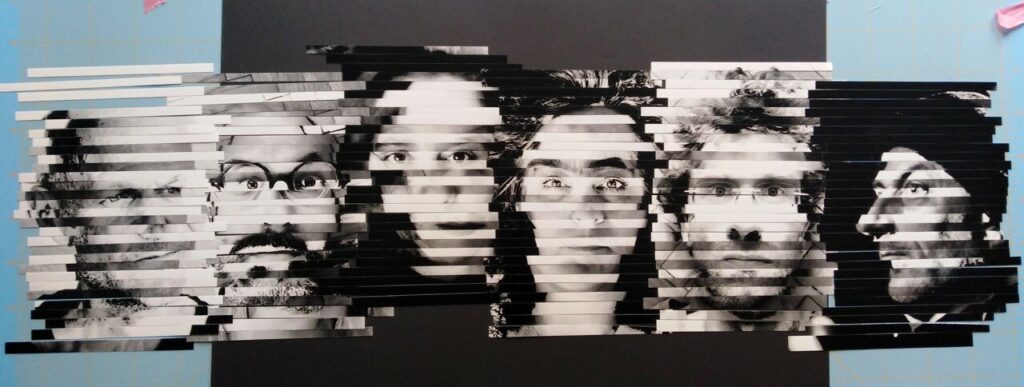
A cooperation between SKE, REAKTOR and Rotting sounds.
Low Frequency Orchestra
Angélica Castelló — Paetzold, tapes, radios
Maja Osojnik — Voice, Paetzold, electronics
Matija Schellander — Kontrabass
Thomas Grill — Electronics
+
Wolfgang Mitterer — Electronics
Jérôme Noetinger — Revox, tapes, electronics
Panel discussion, musikprotokoll 2020 festival
Thomas Grill was invited to take part in a panel discussion together with Reni Hofmüller, Christina Kubisch and Fränk Zimmer, presented by Susanna Niedermayr (ORF Ö1 Zeit-Ton) and hosted by esc medien kunst labor. The festival theme “Hidden sounds” was illuminated from different directions, in our case in the context of the rotting sounds project and the acousmatic composition noise shaping Thomas has presented at the festival the day before.
“Noise Shaping” at Musikprotokoll festival, October 8, Graz
Aloïs Yang & Andreas Trobollowitsch / Rojin Sharafi / Thomas Grill @ Hidden Dome
Thomas Grill gibt mit Noise Shaping einen Einblick in das Forschungsprojekt rotting sounds, das sich mit der Vergänglichkeit von digitalem Klang im sozialen, technologischen und zeitlichen Kontext beschäftigt. Ein zentraler Forschungsgegenstand ist die Repräsentation von Klang als 1-bit-Datenstrom, der die Brücke zwischen digitalen und analogen Signalen schlägt. Der Begriff Noise Shaping steht dabei für den voluminösen Rauschhintergrund, der als Träger der darin verborgenen Klänge verwendet wird. Aloïs Yang and Andreas Trobollowitsch spannen mechanisch erzeugte Klänge in ein komplexes digitales Feedback-System ein; found objects kommen ebenso zum Einsatz wie natürliche Substanzen und performative Raumvermessungen. Und Rojin Sharafi, die ursprünglich aus dem Iran kommt und seit einigen Jahren in Österreich lebt, widmet sich in ihrem Stück der „kulturellen Hegemonie, kulturellen Hybridität und dem kulturellen Überleben“, jenen Stimmen also, die im Kampf um die kulturelle Vorherrschaft gezielt unterdrückt werden. Für ein immersives Klangerlebnis bei Hidden Dome sorgt die 50-Kanal Ambisonics Audioanlage des Dom im Berg, für die die drei Auftragswerke konzipiert wurden.
October 8, 19:30pm
Dom im Berg, Schloßbergplatz, A-8010 Graz
paper at IFC 2020
We will present our work on 1-bit audio at the International Faust Conference 2020 taking place on 1.12.2020 and 2.12.2020 at the Maison des Sciences de l’Homme Paris Nord. Our presentation will be about the bitDSP faust library developed by Till Bovermann and Dario Sanfilippo.

